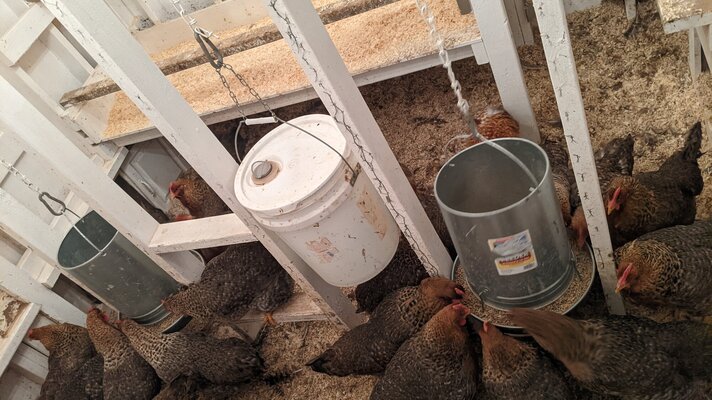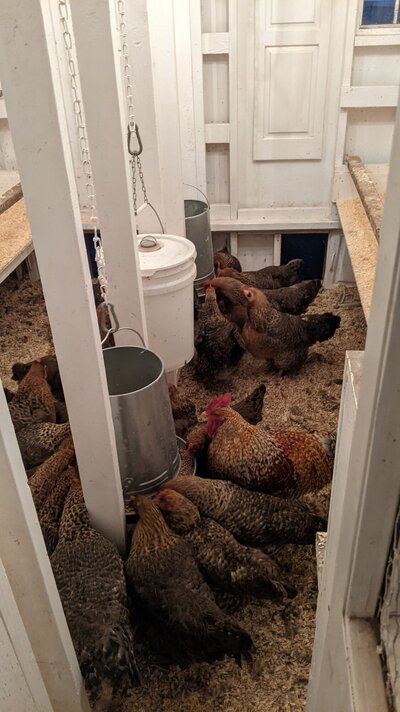MamaBirda
In the Brooder
- Nov 30, 2021
- 14
- 37
- 39
The coop is custom from previous owners, roughly about 12'x9' fully enclosed, insulated, vented properly ( I think), and an elevated floor with indoor laminate wood flooring throughout the coop. Two small doors from the run into the coop and two narrow doors from foyer into the coop on opposite end. The run is 20'x20'. It's all white painted wood and cute but ridiculous to clean. I'll try and post existing photos with this post but add better ones when I can. I use pine shavings in coop and nesting beds. The run is dirt/mud/mucked out pine shavings from coop cleaning. I'm in southern Washington, LOT'S of rain. Pine shavings are soggy, nasty, don't dry out and I find myself completely changing out shavings almost weekly because of the ammonia and SO MUCH POOP. Does anyone have success with all purpose sand and a litter scoop? Also, can I line the painted wood interior with something easier to sipe down or remove to clean easily? I'm tempted to go to a corporate plastic molding company to get a mold custom made for the interior roosts. The design of the coop is really not cleaning friendly, it should have been a doll house. Can't afford to tear down and build new.
You can sort of see the roosts but not behind the roosts. I'll take more pics to post today. You can see the middle of the coop where I cut out the chicken wire so I can access, and the hens can access water and food more easily.
You can sort of see the roosts but not behind the roosts. I'll take more pics to post today. You can see the middle of the coop where I cut out the chicken wire so I can access, and the hens can access water and food more easily.









